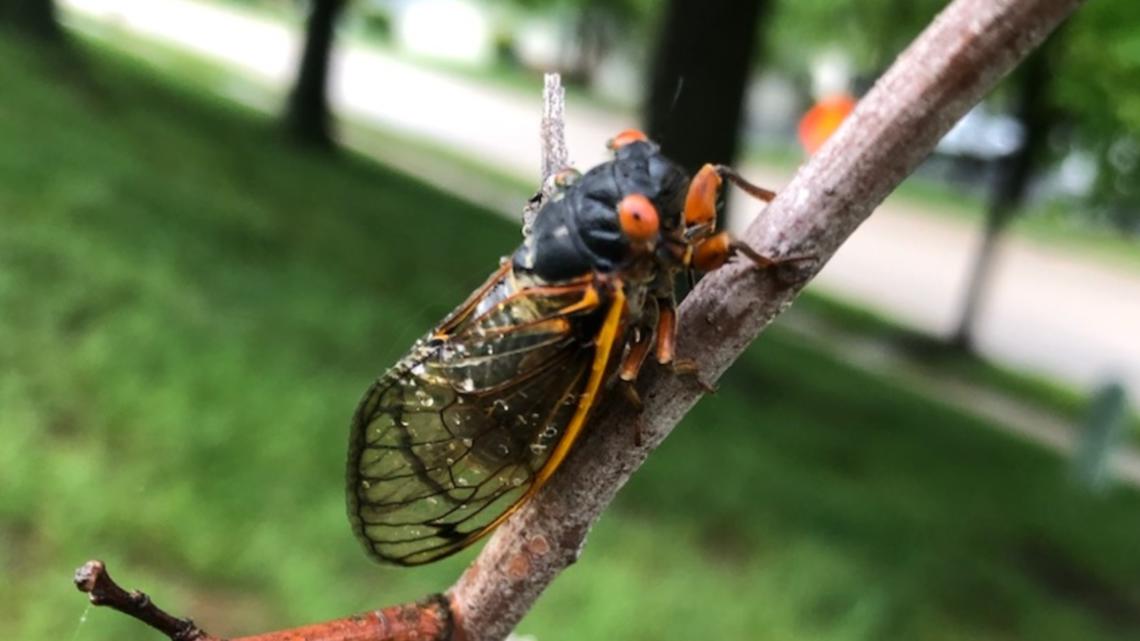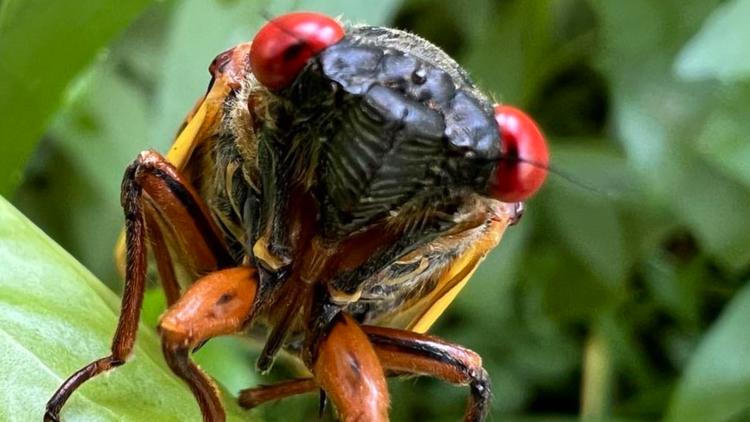NEW YORK — As if lying dormant in the dirt for 17 years isn't weird enough, cicadas possess another bizarre habit: they pee like crazy, up to 10 feet per second. The news comes as they're preparing to emerge in the Chicago area, one of the most populous zones on this year's cicada map.
A study credited to two Georgia Institute of Technology authors — titled "Unifying Fluidic Excretion Across Life From Cicadas to Elephants" — posits that cicadas weighing mere grams "possess the capability for jetting fluids through remarkably small orifices."
Scientists who study such things have found that cicadas urinate in a jet stream because they consume an incredible volume of fluid.
How much do cicadas pee?
In their study, M. Saad Bhamla and Elio Challita write that cicadas have a unique digestive system that allows them to process tree sap fluid at 300 times their body weight.
Other insects that feed in similar ways urinate in droplets. Cicadas, on the other hand, are voracious eaters, consuming large amounts of low-nutrient "xylem sap."
"This jetting capability allows efficient processing of their nutritionally sparse xylem-sap diet and places them as the smallest known animals to form high-speed jets in a surface tension-dominated regime," the authors wrote.
And it's not easy to get into the xylem, which doesn't just flow out when a bug taps into it because it's under negative pressure. The cicada can get the fluid because its outsized head has a pump, said University of Alabama Huntsville entomologist Carrie Deans.
They use their proboscis like a tiny straw - about the width of a hair - with the pump sucking out the liquid, said Georgia Tech biophysics professor Saad Bhamla. They spend nearly their entire lives drinking, year after year.
"It's a hard way to make a living," Deans said.


Be prepared to get a bit wet
The researchers said that cicadas are known to use their jet-stream pee to spray intruders. People have reported getting hit by urine from the little buggers.
In the study, cicadas were clearly king, peeing two to three times stronger and faster than elephants and humans. He couldn't look at the periodical cicadas that mostly feed and pee underground, but he used video to record and measure the flow rate of their Amazon cousins, which topped out at around 10 feet per second.
They have a muscle that pushes the waste through a tiny hole like a jet, Bhamla said. He said he learned this when in the Amazon he happened on a tree the locals called a "weeping tree" because liquid was flowing down, like the plant was crying. It was cicada pee.
"You walk around in a forest where they're actively chorusing on a hot sunny day. It feels like it's raining," said University of Connecticut entomologist John Cooley. That's their honeydew or waste product coming out the back end ... It's called cicada rain."
So, as billions of cicadas emerge across Illinois, be prepared to get a bit wet.
Where will cicadas emerge in 2024?
Two cicada broods are emerging at the same time this year, meaning the U.S. will see more cicadas than usual. The main broods are Brood XIX, which comes out every 13 years, and Brood XIII, which comes out every 17 years. Both of those broods are expected to hatch in various places throughout Illinois this cycle.
Because they are temperature-dependent, their emergences may vary depending on the location. In 2024, they are expected sometime in May or early June, according to Ken Johnson, a horticulture educator at the University of Illinois.
Once they've hatched, cicadas generally live only for a certain amount of weeks. They spend the majority of their time reproducing.



